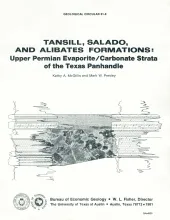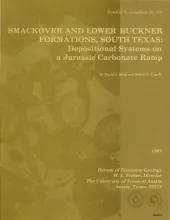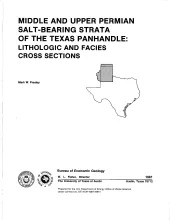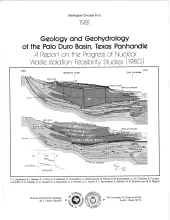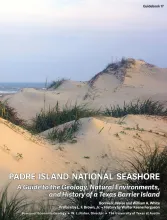The Salado-Tansill and Alibates Formations are the youngest evaporite and carbonate facies within a thick Permian sequence of evaporites, carbonates, and red beds in the Texas Panhandle. They accumulated during the final stages of a regional regression that began in Early Permian time, and they record the last minor incursion and subsequent regression of Permian seas in the Texas Panhandle.
The Smackover and lower part of the Buckner Formations (Oxfordian) comprise a thick regressive sedimentary sequence deposited on a Jurassic carbonate ramp. Four major depositional systems are recognized: (1) basinal, (2) low-energy open shelf, (3) high-energy shoal, and (4) sabkha. Lithofacies boundaries within each system and between systems follow paleobathymetrical contours. High-energy grainstone facies were concentrated landward; muddy low-energy facies were deposited seaward.
Regional cross sections of Middle and Upper Permian rocks in the Texas Panhandle illustrate the lithology, depositional systems, and structure of these salt-bearing strata. This report explains the interpretative techniques used in preparation of the cross sections that accompany the text, and highlights significant geologic relationships displayed on the cross sections.
Integrated study of the basin structure, tectonic history, physical stratigraphy, hydrogeology, geochemistry, geomorphology, natural resources, and rock physics of the Palo Duro and Dalhart Basins in the Texas Panhandle is part of a national evaluation of ancient salt basins as potential sites for isolation and management of nuclear wastes.
For the past decade, geologists at the Bureau of Economic Geology, The University of Texas at Austin, have prepared various maps of the Texas Coastal Zone. The Environmental Geologic Atlas of the Texas Coastal Zone, a seven-volume series, includes environmental geologic maps as well as other maps depicting special features of the region such as land use, mineral and energy resources, and natural processes. A special atlas, Natural Hazards of the Texas Coastal Zone, illustrates the occurrence and significance of hazards such as hurricane tidal flooding, coastal erosion, and land subsidence.


